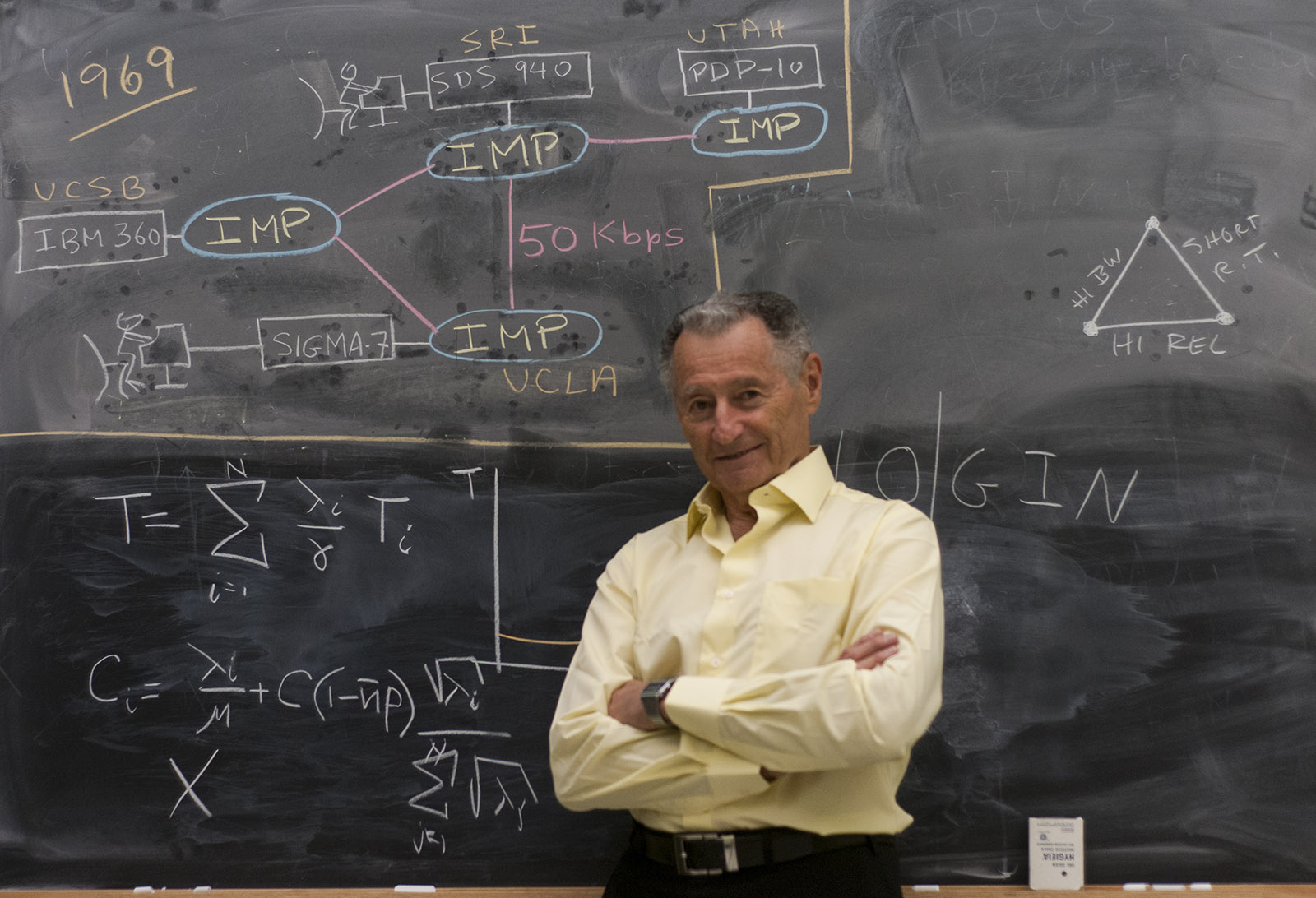Film ‘Lo and Behold’ documents the internet’s beginning at UCLA

“Lo and Behold,” a documentary about the internet’s impact directed by Werner Herzog released Aug. 19, and features Leonard Kleinrock, a UCLA computer science professor. (Jennifer Hu/Daily Bruin)
By Deanna Necula
Aug. 21, 2016 11:00 p.m.
When Leonard Kleinrock’s student sent the first internet message from UCLA to Stanford, he said it felt more like a perfunctory job well done rather than a moment that would go down in history.
“There was no celebration; we went home that evening and that was it,” Kleinrock said.
In a new documentary “Lo and Behold,” Kleinrock describes that moment and how the internet got its start, said the film’s media representative Arianne Rocchi. The film, directed by critically acclaimed filmmaker Werner Herzog, explores what Herzog calls the “connected world”, the countless relationships and opportunities made possible by the internet, she said.
“Lo and Behold” was released in in select theaters, including the Nuart Theater on Santa Monica Boulevard, on Aug. 19th.
Kleinrock, who has been a computer science professor at UCLA since 1963, helped set the groundwork for the internet when he was a graduate student at the Massachusetts Institute of Technology, he said. He developed a mathematical theory that would facilitate packet switching, the ability of a network to transmit signals in discrete bundles of information instead of through a single burst.
With packet switching, information can be released back into the network immediately after it is picked up so that other network centers can use the same data, Kleinrock said. The same concept is what underlies our modern understanding of the Internet: the ability to access web pages, videos, and other applications simultaneously, he said.
Kleinrock’s packet switching theory initially received underwhelming commercial interest, he said, remaining dormant until it was revived by the Advanced Research Projects Agency, or ARPA, in 1967. ARPA employed researchers nationwide who needed a way to communicate and transmit data effectively, he said. The agency, now known as DARPA, saw Kleinrock’s work on packet switching as a possible solution.
In September 1969, ARPA set up the first ARPANET-connected computer, or node, at UCLA. A few months later, the Stanford Research Institute received another node, Kleinrock said.
Herzog’s “Lo and Behold” is titled after the first message sent via the internet, the letters “Lo,” which were meant to spell “login.”
Charley Kline, a student in Kleinrock’s lab at the time, tried to login into the Stanford computer from UCLA to test whether the software linking the two nodes was functional.
Sitting in a small, windowless green room in Boelter Hall, Kline typed out the letter “L” while speaking to a Stanford Research Institute researcher over the phone. Beside him was the packet switching node, a refrigerator-sized white box peppered with knobs and dials.
“Yeah, I see the L,” the researcher told Kline.
Then he typed an “O” and the researcher confirmed he had received that too. When Kline typed in the “G,” the Stanford Research Institute researcher’s system crashed.
Despite the Stanford Research Institute computer’s technical failure, it was the first sign that the ARPAnet could facilitate computer-to-computer communication– a success by Kline’s standards, he said.
“I was there alone at 10 at night,” Kline said. “When I (sent the transmission) it was like I had written a paper (for class) and turned it in. Only later did someone say that ‘paper’ changed the entire field.”
Room 3420 in Boelter Hall, where Kline sent the letters ‘Lo,’ is now preserved as the Kleinrock Internet Heritage site, and is still home to the first packet switching node.
Kleinrock said he initially regretted the lack of foresight in preparing a pivotal message for the historic moment. But later, he found that “lo” captured that night’s significance in a way he did not anticipate.
“The first telegraph message was “What hath god wrought,” Kleinrock said. “The first message from man on the moon was “One small step for man, a giant leap for mankind.’ They had a message ready and press available – we had none of that.”
But serendipitously, the message ‘lo’ was the most prophetic, profound, succinct message anyone could have developed, he said.
Though he realized how important the internet would be for researchers, Kleinrock said he did not foresee it would become so widely used for social networking. Kleinrock realized the internet’s implications for popular communication only years later, when email and the World Wide Web were founded in 1972 and 1989 respectively.
Kleinrock said he thinks the internet will continue to grow in unforeseeable ways. Through his packet switching theory, researchers have come to create a system that surprises people in ways he never even anticipated.
But he said he is confident of one thing: the internet will become deeply integrated into society’s physical infrastructure.
“It will become a pervasive global nervous system,” Kleinrock said. “Everywhere you go the internet will be available, and it will be invisible. You walk into a room, the room will know you’re there. You can talk to the room and it will respond. The internet will disappear into the infrastructure just the way electricity has disappeared into the walls.”
Contributing reports from Kuhelika Ghosh, Features editor.


